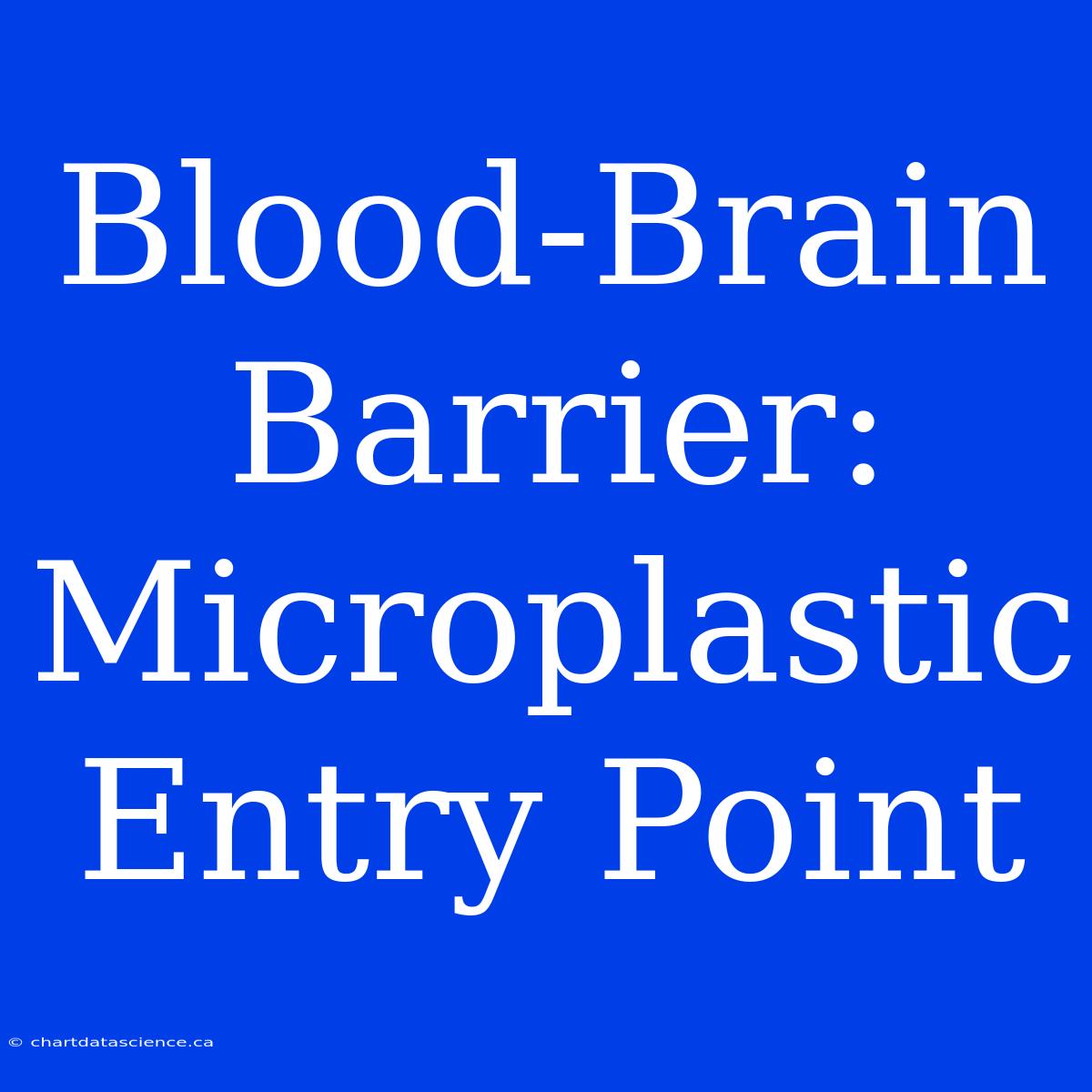The Blood-Brain Barrier: A Microplastic Gateway?
You probably know about the blood-brain barrier, that crucial layer protecting your brain from harmful substances circulating in your blood. But have you considered the possibility of microplastics, those tiny plastic particles, slipping through this protective wall?
It's a question that's causing serious concern in the scientific community. While we know microplastics are found everywhere, from our food and water to the air we breathe, the potential implications of them entering our brains are still being investigated.
How Microplastics Could Cross the Blood-Brain Barrier
The blood-brain barrier acts like a highly selective gatekeeper. It's made of tightly packed cells that allow essential nutrients to pass through while keeping harmful substances out. But, microplastics, with their small size and unique properties, may be able to sneak through.
Here's how it could happen:
- Size matters: Microplastics are incredibly small, ranging from a few micrometers to a few millimeters. This size allows them to potentially slip through the gaps in the blood-brain barrier.
- Transportation: They could hitch a ride with other molecules that normally pass through the barrier, like proteins or lipids.
- Direct passage: Some research suggests microplastics might be able to directly penetrate the barrier, possibly due to their chemical properties.
Potential Implications of Microplastics in the Brain
While research is still in its early stages, the potential implications of microplastics in the brain are alarming. They could:
- Trigger inflammation: Inflammation in the brain is linked to neurodegenerative diseases like Alzheimer's.
- Disrupt neurotransmission: Microplastics could interfere with the communication between nerve cells, potentially impacting brain function.
- Lead to neurotoxicity: Certain types of microplastics could be directly toxic to brain cells, leading to damage and degeneration.
The Need for Further Research
We're still in the early phases of understanding the impact of microplastics on human health. More research is desperately needed to determine:
- How common is microplastic entry into the brain?
- What are the long-term effects of microplastics on brain function?
- What steps can we take to reduce exposure to microplastics and protect our brains?
The potential for microplastics to cross the blood-brain barrier is a serious concern. It's a reminder that we need to take proactive measures to reduce our exposure to plastic waste and push for solutions that protect our health and our planet.

